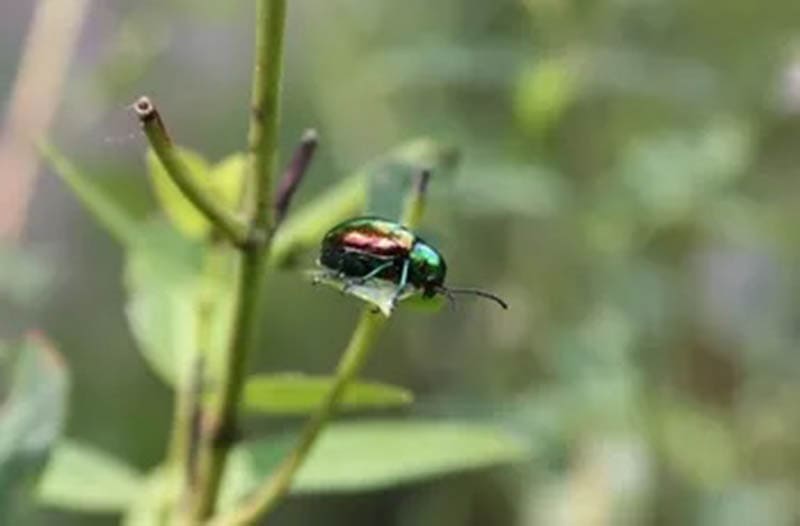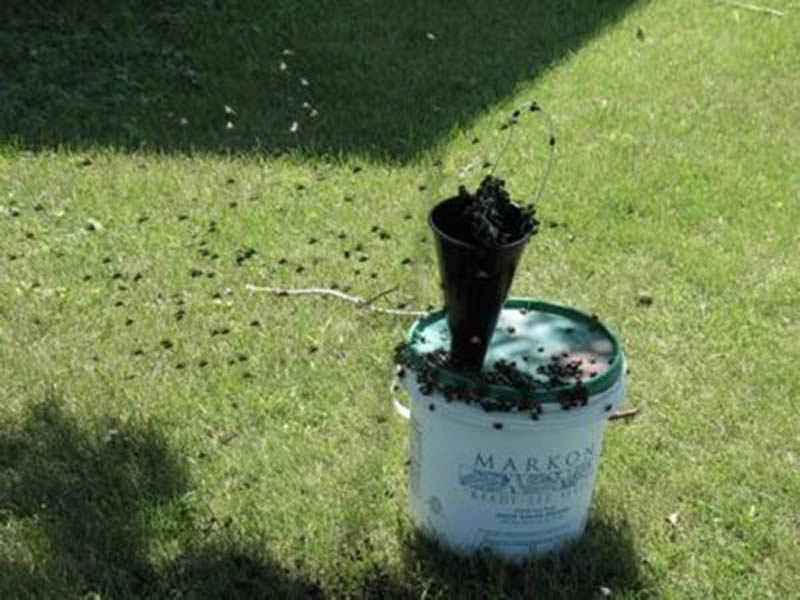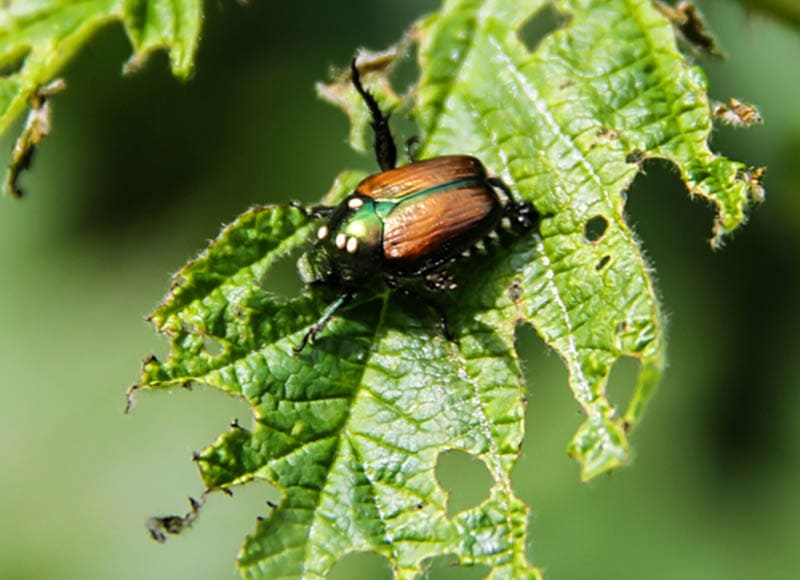4 DIY Japanese Beetle Trap Plans You Can Make Today (With Pictures)
-
Shea Cummings
- Last updated:

Japanese beetles may be cool looking, but don’t let their looks fool you—they’re an extremely destructive pest. Grass, plants, flowers, it doesn’t matter; nothing is safe from these beetles. In fact, they will happily destroy more than 300 different types of plants.
For such a destructive bug, you’d think there would be many ways to get rid of them. Unfortunately, they are an expensive and complicated pest to control. We’ve gathered four different DIY Japanese beetle traps that you can make. Remember that these traps aren’t complex, and you can customize these plans or use slightly different materials that will give similar results.
After the plans, we’ve got a little information on the ultimate effectiveness of Japanese beetle traps and why you may want to explore other ways to control these pests in your garden.
The 4 DIY Japanese Beetle Traps Plans
1. Homemade Japanese Beetle Lure by Garden Guides

| Materials: | One-gallon milk jug, one pack of yeast, ¼ cup of sugar, warm water, dish soap (optional) |
| Tools: | Knife, tape |
| Difficulty: | Easy |
Suppose you’re having trouble in your garden with a Japanese beetle infestation. In that case, this homemade Japanese beetle lure may help with that. This trap is excellent because it uses common materials that most people already have lying around the house.
Like any other bug trap, this one is effective because the smells inside the trap lure the bug in. But once they’re in, it’s almost impossible for them to get out, especially if you choose to add a little bit of dish soap to the liquid. The soap coats their wings and causes them to drown very quickly.
2. Japanese Beetle Trap by Instructables

| Materials: | Three or five-gallon bucket, wire coat hanger, funnel, Japanese beetle lure (puck-style works well) |
| Tools: | Multitool, hole saw |
| Difficulty: | Easy |
There are plenty of “fancy” commercial traps, but this DIY Japanese beetle trap is likely just as effective at doing the job. Like the first one on this list, this project mostly uses things you will likely have lying around the house. You will only have to get some form of Japanese beetle attractant—unless you want to make your own.
Because of the size of this trap, there will be a significant number of beetles to get rid of. It’s important to ensure the beetles are dead before emptying the trap. For example, if you bury a shovel full of beetles in the dirt, they will easily dig their way out if they aren’t dead.
3. Homemade Japanese Beetle trap by Carrie’s Gardening Channel on YouTube
| Materials: | Plastic milk carton, empty mayo jar, wire hanger, commercial beetle attractant |
| Tools: | Knife, hole saw |
| Difficulty: | Easy |
If you’d prefer to watch a video tutorial, this homemade Japanese beetle trap plan is a good one. It follows the same principle as the first two traps on this list. One difference is that it’s designed to hang instead of sitting on the grass.
You can either go with a commercial beetle lure or make your own with a water, sugar, yeast, and fruit solution. One downside to this trap is that it’s a bit smaller. So, it may not be the best if you have a serious infestation. But it’ll be a great choice if the beetle problem isn’t terrible. Even with lots of beetles around, you may simply have to empty the trap more often.
4. DIY Japanese Beetle Spray by Old World Garden Farms

| Materials: | Cedar wood chunks, five-gallon bucket, water, cedar oil (optional) |
| Tools: | Spray bottle or pump sprayer |
| Difficulty: | Easy |
Unlike the other three traps on this list, this DIY Japanese beetle spray is effective at preventing infestation in the first place. If you keep the beetles from feeding on your plants, to begin with, you may not need to use a trap that will, unfortunately, just bring more beetles to your yard.
If you want to go the true DIY route, the plan explains how to make your own cedar oil by extracting it from cedar wood chunks. However, if you prefer a little less hands-on, you can purchase cedar oil, then mix it with water yourself. The plan also details how to apply it to your plants.
- Wintergreen
- Teaberry oil
- Peppermint oil
- Neem oil
- Juniper berry oil
- Chives
- Garlic
- Wormwood oil
Should You Use Japanese Beetle Traps?
Many gardening professionals agree that Japanese beetle traps are not always the best form of pest control. This is especially true if you’re using a commercial lure that contains pheromones. What happens is the lure attracts beetles that may not have otherwise visited your yard in addition to the ones that are eating your plants.
There’s no doubt that a Japanese beetle trap will kill some beetles. However, if you leave the trap when it’s full, it will actually deter them from entering. So, now you’ll be attracting new beetles to your yard, but the trap will be ineffective.
Most professionals recommend deterring the Japanese beetle instead of trying to lure it and kill it.
Alternative to a Trap
Here are several alternatives to traps that you can try
DIY Japanese Beetle Insecticide
If you’re a hands-on gardener checking on your plants daily, here is a DIY insecticide solution that you could spray on plants affected by the beetles. Keep in mind that you’ll need to reapply this solution regularly.
- Four cups of water
- One cup of rubbing alcohol
- Once cup of vegetable oil
- One tablespoon of dish soap
Insecticide
If you decide you just want to deal with the problem and don’t want the DIY pressure anymore, there are plenty of insecticides on the market that will kill Japanese beetles. However, depending on the plant you’re spraying, a commercial insecticide may not be the best idea. For example, many insecticides cannot be used on plants you intend to eat.
Hand Picking
If you’re really gungho about getting rid of these beetles and the infestation isn’t out of control, hand-picking the beetles off the leaves is a viable solution. You’ll likely have to do this constantly for a while for a long-term solution.
Conclusion
If you’re dead-set on luring, trapping, and killing these destructive beetles, now you have the knowledge to make a deadly beetle trap. However, if you’d prefer to go the deterrent route, you also have that information. Whichever way you go, we wish you all the success with your beetle-killing endeavors.
Featured Image Credit: Filipe Resmini, Unsplash
Contents

